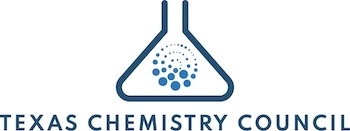Complete Story
11/07/2024
Judge Posits New Tactic for PFAS Cost-Recovery from Government
BNA Environment & Energy Report | Pat Rizzuto | Nov. 4, 2024
Judge Posits New Tactic for PFAS Cost-Recovery from Government
BNA Environment & Energy Report | Pat Rizzuto | Nov. 4, 2024
The US is taking so long to decide whether it will pay plaintiffs for costs they’ve spent controlling PFAS released by federal facilities that plaintiffs may want to explore whether some additional legal filings could resolve roadblocks, a judge said.
Judge Richard M. Gergel, with the US District Court for the District of South Carolina that’s overseeing In Re Aqueous Film-Forming Foams Products Liability Litigation MDL 2873, held a case status conference with plaintiffs’ and defendants’ attorneys on Nov. 1.
Progress must be made on two core issues—cost-recovery and product identification—for the national litigation about PFAS-enabled fire suppressants to proceed, Gergel said in a conference transcript.
A more efficient process is needed to determine whether federal agencies will pay parties who’ve had to spend money controlling two perfluoroalkyl and polyfluoroalkyl substances (PFAS), he said.
Property owners, states, and other parties that have had to pay remediation costs for hazardous substances can recoup certain cleanup costs from potentially responsible parties under the Comprehensive Environmental Response, Compensation, and Liability Act (CERCLA), or Superfund law.
Two PFAS—perfluorooctanoic acid (PFOA) and perfluorooctanesulfonic acid (PFOS)—that commonly were used in the fire suppressants became hazardous substances under a final CERCLA rule the Environmental Protection Agency issued in May. Christina Falk, an attorney with the Department of Justice representing the federal government, said during an April status conference that the EPA’s rules meant cost recovery claims could be made against the US government.
She estimated that at least 20 claims that had been filed citing other statutory authorities could seek resolution under CERCLA following the EPA’s action.
Plaintiffs have since submitted four cost-recovery demand letters, DOJ attorney Andrew Knudsen, said on Nov. 1.
‘Too Slow’
But plaintiffs’ attorneys have told him the cost-recovery process is “too slow, too deliberate,” Gergel said. “It will be like 500 years based on the present pace. So we need to have some process.”
CERCLA’s requirements are more complex than simply showing contamination occurred and receiving a check for damages, said Knudsen, who is representing the government.
“If the barrier is what’s the law on certain issues, let’s tee those up and get them resolved,” Gergel said. “Then everybody will know, you know, what the law is, at least as to this case.”
The department needs to focus on finding a general path to get claims resolved, he said. “If there are really thousands of contaminated sites allegedly related to military bases and other federal facilities, then a one-by-one system will take forever.”
Product Identity Plan
Conference participants said they’ve found more ways since September’s status conference to link PFAS found at specific sites or in people’s bodies to particular companies that made the chemicals or products containing them.
Yet they’ve also identified obstacles like record retention limits, said Scott Summy, leader of Baron & Budd PC’s Environmental Litigation Group (ELG) and plaintiffs’ co-lead counsel.
Further progress is needed, Gergel said. “We’ve kind of reached an impasse on a really threshold issue that I think has emerged more and more as we’re getting beyond the water district cases.”
Many states that accepted the fire suppressant from facilities, such as fire departments or state airports to help ensure proper management of the foams, have inventories and pictures of products the facilities stored, said Bill Jackson, a Kelley Drye & Warren LLP attorney who chairs the state and sovereign committee within the multidistrict litigation.
More ideas are likely to emerge if parties focus product identification efforts on a manageable number of sites, perhaps 10 to 15, Gergel said.
He gave parties 60 days to come back with a proposed list of sites, amount of discovery time needed, and other details.
Following the conference, the court also scheduled a hearing on Feb. 7, 2025, to discuss three federal government motions to dismiss cases filed against it.
The case is In Re Aqueous Film-Forming Foams Products Liability Litigation MDL 2873, D.S.C., No. 18-02873, Status Conference and Orders 11/1/24.

